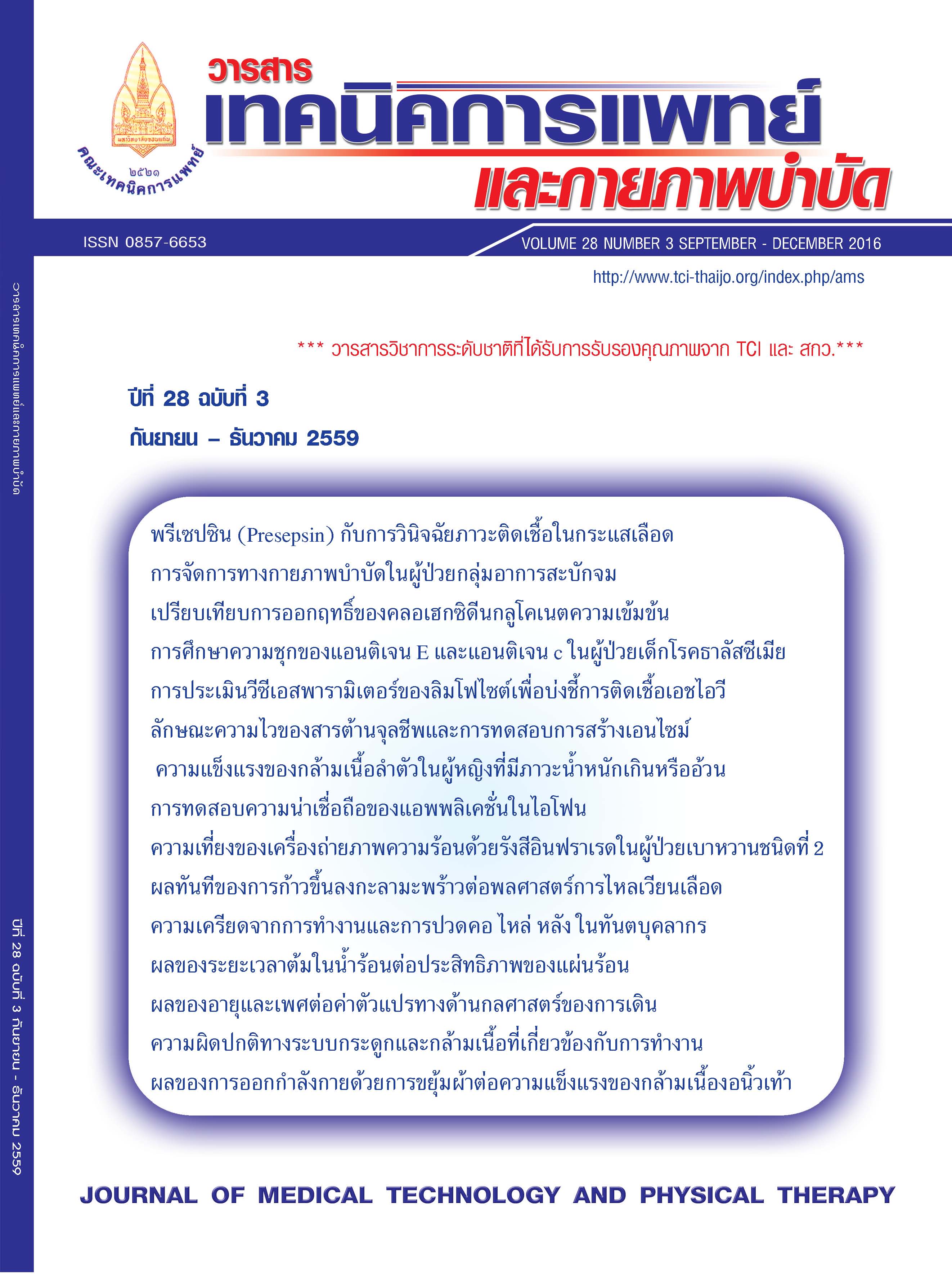Evaluation of lymphocyte VCS parameters for prediction of HIV infection
Main Article Content
Abstract
Human immune deficiency virus (HIV) infection leads to a reduction in the number and morphologic changes of CD4 lymphocytes. A hematology analyzer with VCS (volume, conductivity and light scatter) technology can determine morphologic properties of leukocytes. The aim of this retrospective study was to evaluate the clinical usefulness of lymphocyte VCS parameters in predicting HIV infection. We analyzed the lymphocyte VCS parameters obtained from Beckman Coulter LH780 of 58 HIV-infected cases comparing to 80 healthy subjects. The lymphocyte index was calculated from [(MLV x LV-SD) ÷ MLC]. We observed significant differences in all parameters including lymphocyte index, but not mean lymphocyte volume (MLV). Cut off values were established for each parameter based on receiver operator characteristics (ROC) curves. LV-SD with cut-off value > 16.4 and LC-SD with cut-off value > 15.6 showed good sensitivity (75.86% and 79.31%) and specificity (91.25% and 93.75%) in predicting HIV infection. Moreover, LV-SD also showed a significant inverted correlation with absolute CD4 count (r = - 0.208, p-value = 0.025). The clinical usefulness of the LV-SD for monitoring the efficacy of antiretroviral therapy among HIV-infected patients should be further evaluated. This study demonstrates that LV-SD and LC-SD may be promising indicators for HIV infection. The potential clinical usefulness of these parameters merits further exploration in a larger prospective study in a population at risk for HIV infection.
Article Details
How to Cite
1.
Chanpum A, Kitcharoen S. Evaluation of lymphocyte VCS parameters for prediction of HIV infection. Arch AHS [Internet]. 2017 Feb. 1 [cited 2024 Apr. 19];28(3):234-43. Available from: https://he01.tci-thaijo.org/index.php/ams/article/view/76273
Section
Original article

